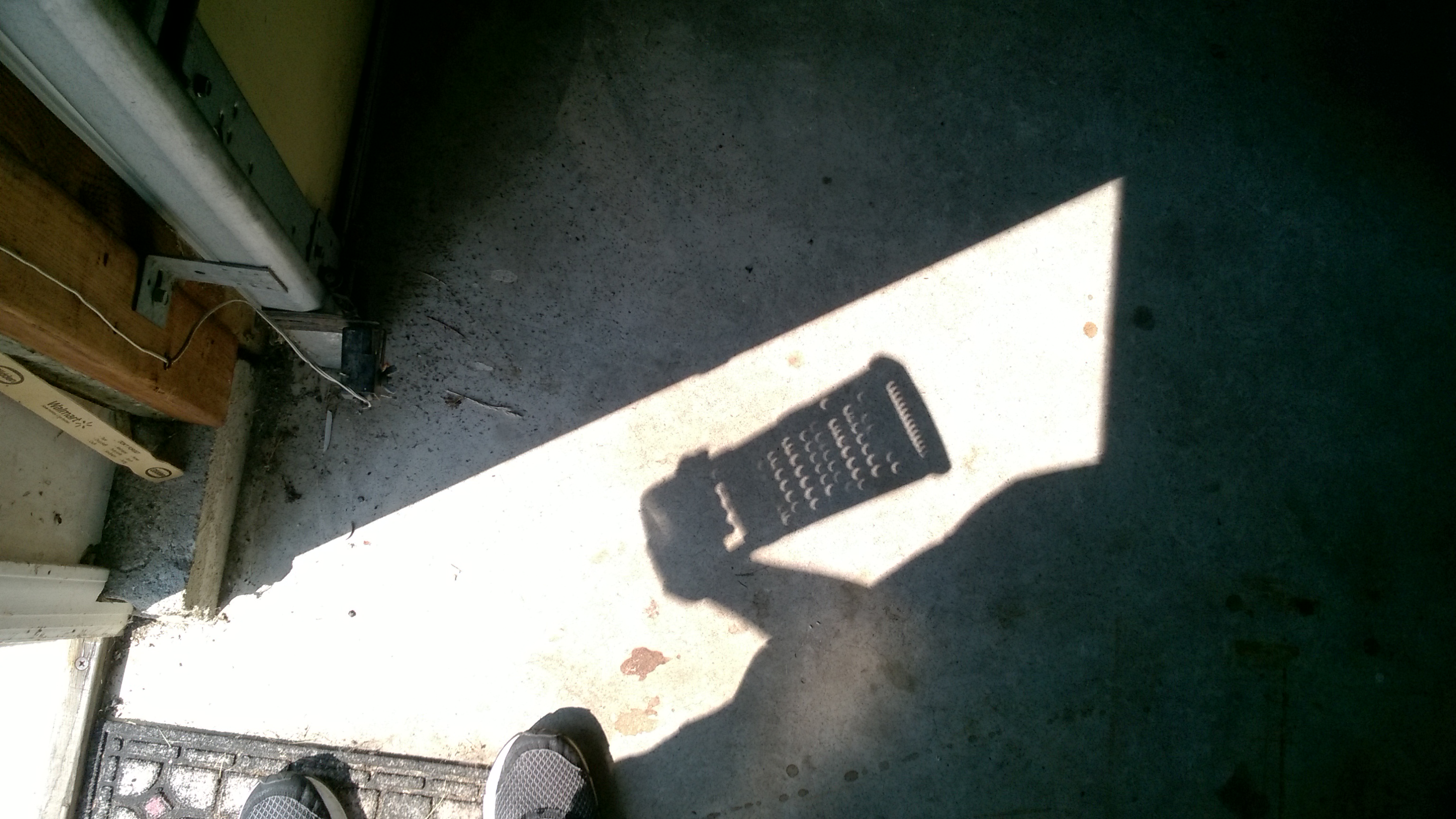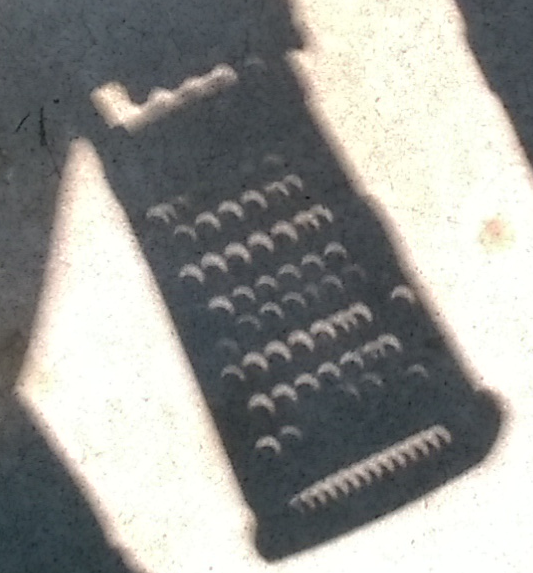Intro
I was at home during the great eclipse of August 2017. I didn’t buy the special viewing glasses. I remembered the general advice that anything with holes in it would show off the shape of the moon covering the sun by its shadow.
Initially I tried paper with three holes from a hole punch. Result were OK but not that impressive.
I was idly pulling disk=hes out of the dishwasher when I came across our cheese grater. Lots and lots of holes all over. This was the thing!
Everyone I’ve shown these two loved the novelty.
The setup
I’m standing just inside the garage – nice smooth surface for shadows – by the doorway. I find a way to simultaneously hold my phone and the cheese grater, and (mostly) get sufficiently out of the way that the cheese grater’s shadow is cast unobstructed onto the garage floor. It was a little tricky.
I’ll present the full picture and then the shadow of the cheese grater blown up at two different times – 2:27 PM and 2:41 PM EST.
And, yes, the holes in the grater are actualklky round and the normal shadow would be full of round circles of light where the sun passes through the grater’s holes!
It was a hot day. I could feel the air cool down during the eclipse! And cicadas started their shrill cry.
2:41 PM pics
Click on any of these pictures to see it blown up.

And focussing on the cheese grater’s shadow:

2:27 PM pics
This time is probably closer to the greatest coverage of the moon over the sun.


Conclusion
A common cheese grater gives us a good idea of what the sun looked like during the eclipse, and creates something marvelous at the same time.
Discussion – 2022 update
The 2017 eclipse was a blown opportunity for citizen astronomers to contribute to one of the most difficult-to-measure astronomical metrics: the bending of nearby starlight by the sun. Believe it or not, the eclipse measurements of this effect from 1919, which proved Einstien’s prediction about gravity’s effect on the path of light, is still about the most precise we have. And it’s not very good! Unlike everything else we measure through scientific experiements, it didn’t improve with time.
References and related
The book No Shadow of a Doubt discusses how they (Eddington and Dyson) measured the bending of starlight by the sun during the 1919 solar eclipse, and all the problems with those attempts.